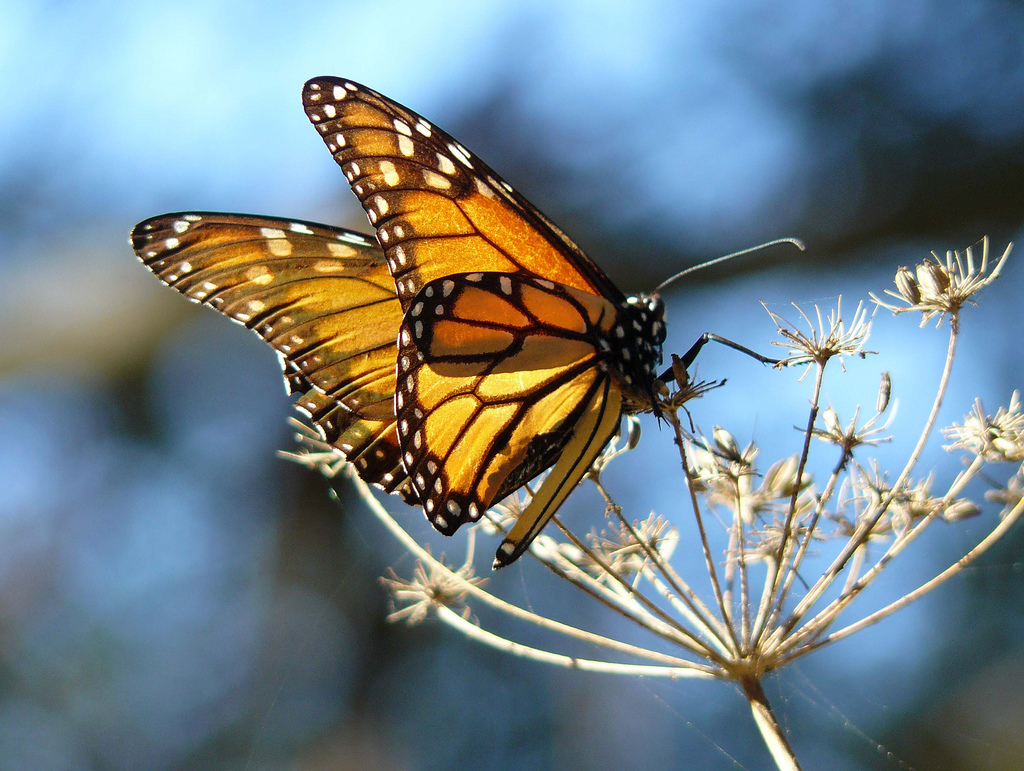We have talked about monarch butterflies before. The orange and black butterflies are often used in school lessons about insect ecology. Monarch caterpillars forage exclusively on milkweed; in the process they acquire foul-tasting chemicals that ward off predators. In late summer, monarchs living in the Eastern U.S. migrate to overwintering grounds in Mexico.
Habitat loss, herbicides, and invasive species have all played a part in diminishing this once common species. East of the Rockies, monarchs have declined by more than 90% since 1995. Loss of overwintering habitat is part of the problem. A bigger threat, however, is the widespread decline of milkweed due to herbicide use on corn and soybean crops.
In the Northeast, two invasive plants are adding to the monarch’s woes. Black swallow-wort and pale swallow-wort are perennial vines introduced into the U.S. from Europe and Russia during in the mid to late 1800’s. These invasive plants are now found across the northeastern U.S. and southeastern Canada.
Unmanaged, swallow-wort can take over open habitat, choking out native plants. Because swallow-wort is in the milkweed family, it’s especially problematic for monarchs. Plants give off cues that trick a small but significant percentage of monarchs into laying their eggs on them. When the eggs hatch, larvae die.
Manually digging up swallow-wort can be effective but is labor intensive. Cut plants should be burned or bagged and landfilled – not composted. Mechanical mowing can reduce spread if it takes place before seeds mature. On large patches, herbicides remain the most effective control.
Help monarchs by conserving milkweed patches, planting new milkweed plants, and removing swallow-wort whenever possible.
**********
–This segment was adapted from an essay by Mike Fargione.
To learn more about invasive species in New York’s Hudson Valley, including upcoming events, visit the Lower Hudson Partnership for Regional Invasive Species Management. Help track the spread of invasive species in your area by contributing observations at iMapInvasives. Learn more about monarch conservation by visiting the Monarch Joint Adventure website.
Web Links
Photo, taken November 15, 2008, courtesy of Docent Joyce via Flickr.
Earth Wise is a production of WAMC Northeast Public Radio, with script contribution from the Cary Institute of Ecosystem Studies.
